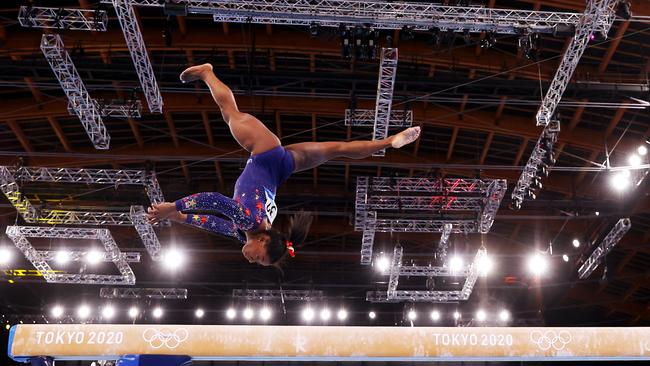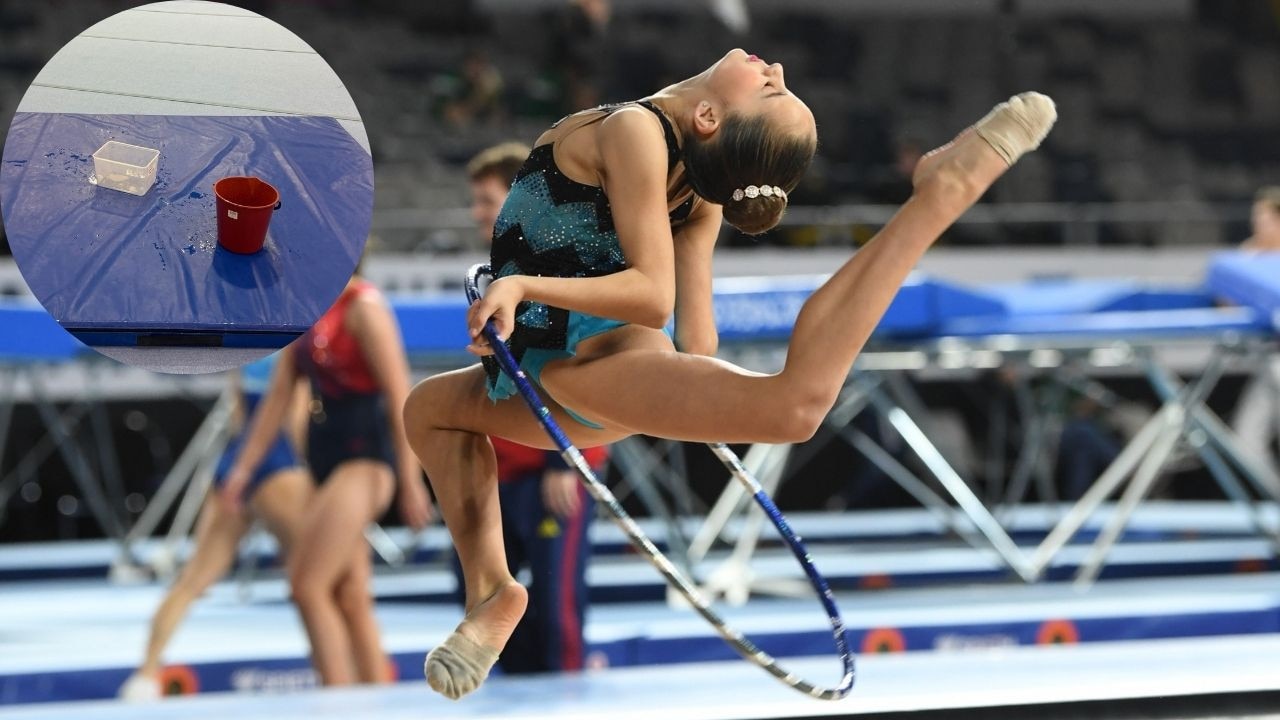Tokyo: Science behind Simone Biles’ gymnastics genius
Simone Biles is favourite to take as many as four individual titles at the Tokyo Olympics. So how does she stay ahead of the rest?

Simone Biles — widely considered the greatest gymnast of all time — is a favourite to take as many as four individual titles at her second consecutive Olympic Games.
But after a subpar showing during qualifications, winning those medals may come down to the moves Biles can do that have broken the boundaries of the sport time and time again.
She executes wildly difficult skills that her competitors can’t even attempt. She is the first gymnast to perform them, and they are officially named for her after she completes them in an international event. So far, she is set to be not just the first gymnast, but the only gymnast, to do them.
In order for her to conquer gymnastics, she had to conquer something else: physics.
The Wall Street Journal asked physicist Eric Goff, a professor at the University of Lynchburg, to analyse the scientific underpinnings of the extraordinary feats she is expected to pull off at these Olympics. This is how Biles is able to do what no one else has been capable of.
Flying Far Above the Beam
Biles’ double-twisting double somersault from the balance beam is a boundary-breaking move. It is rated by the international gymnastics federation as the highest-scoring dismount — although she has contended it is still lowballed given how hard it actually is.
If Biles performs the Yurchenko double pike vault at the Olympics, it will officially become the hardest vault registered in the women’s gymnastics rulebook. The vault is likely to carry a difficulty value of 6.6. Biles and her coaches and the American gymnastics federation argue it should be higher still.
Taking Flight from the Floor
Biles debuted the triple-twisting double somersault on the floor exercise in 2019. Known as the triple-double, it is a move so difficult that it strained at the letter boundaries of the sport’s code of points, which rates skills on floor, beam and uneven bars from A to I. Until the triple-double, there was no such thing as a J-rating.
Every one of her twists and turns is the product of her ability to contort her body with such power and precision, allowing her to fly through the air unlike anyone else. Behind each of those moves, there is science: velocity, spring potential energy, conservation of angular momentum and more. It is how she twists in the time it takes a Major League Baseball fastball to reach home plate and gets so high in the air she could dunk a basketball with her feet.
Biles’s capacity to harness the sheer power she is able to generate will determine just how many medals she leaves Tokyo with. But after spending hours analysing her routines to granularly understand the types of things that belong in college textbooks, Dr Goff was left with one more thought. It wasn’t particularly scientific.
“Other than saying she’s utterly amazing,” he says, “I don’t know how much more I can add.”
Additional reporting: Dave Cole, Andrew Beaton
Wall Street Journal



To join the conversation, please log in. Don't have an account? Register
Join the conversation, you are commenting as Logout